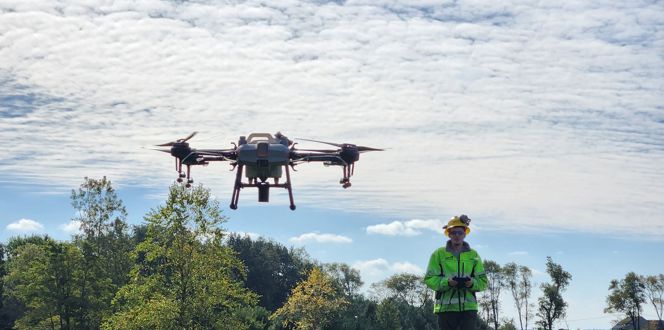Caltrans
Davey Resource Group conducts tree health assessments across northern California transportation rights-of-way to help Caltrans mitigate tree-related damage and public safety concerns.
Project Narrative:
In 2017 Davey Resource Group (DRG) began work with Caltrans to identify and inventory dead and diseased trees that posed a hazard within Caltrans Rights-of-Way (ROW) throughout the state of California. This work was prompted by an executive order signed by California Governor Jerry Brown, calling for a Tree Mortality Task Force to find solutions to the growing safety concern of dead and dying trees across the state due to a severe drought.
DRG’s Urban Forestry and Natural Resource Management teams worked with Caltrans to develop a data dictionary that would provide Caltrans with the information they needed while keeping the process efficient. DRG used our in-house Rover software loaded onto ruggedized field tablets for data collection, minimizing start-up time and costs. DRG also conducted outreach to affected property owners with letters and door hangers that provide information about participating in the tree removal project.
Fast Action With A Team Of Experts
DRG was able to mobilize immediately and assist Caltrans in obtaining Tahoe Regional Planning Agency (TRPA) permits before a deadline by quickly pulling together a team of specialists. The team included Registered Professional Foresters, ISA certified arborists, and Tree Risk Assessment Qualified arborists and equipment needed to complete the inventory. Field crews performed surveys, collecting multiple attributes for each dead or dying tree, and field marking for contractor identification. Assessments were also made on what type of work was needed to remove the tree and any environmental concerns within the workspace in accordance with California Forest Practice Rules. DRG produced data files and site maps for each route surveyed which was posted on the Caltrans website for public review.
DRG completed inventories along more than 300 miles of state routes and collected over 15,000 data points.
DRG also provided GIS support to create priority mapping for fuel reduction work. The objective of the priority mapping project was to proactively take steps to ensure people’s safe egress during fires as well as the ingress of emergency personnel. To support this, DRG utilized 21 different criteria to run an analysis to determine the highways and sections to prioritize for fuel reduction. In addition to performing the analysis, DRG assisted the client in interagency meetings to present the data.
Caltrans’ project is ongoing. It serves as an important part of the larger effort to mitigate tree-related closures and implement action plans to prevent damage due to devastating wildfires. DRG maintains an excellent rapport with Caltrans, and they continue to provide invaluable analytical support for this initiative.





